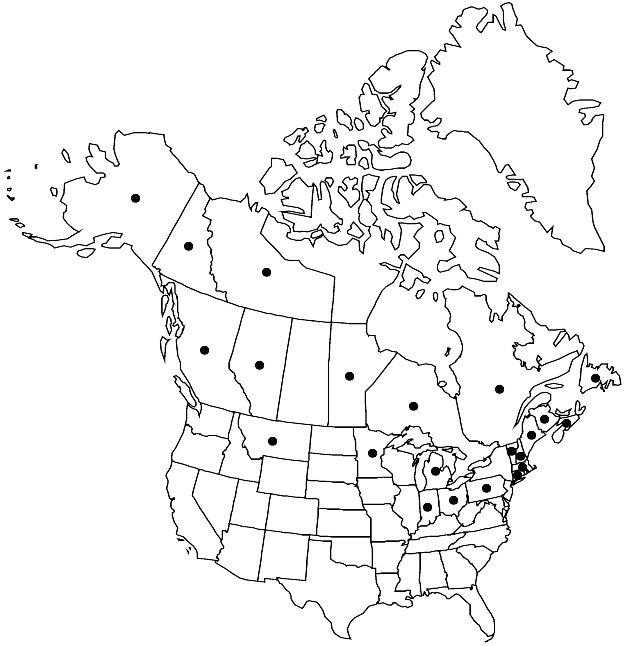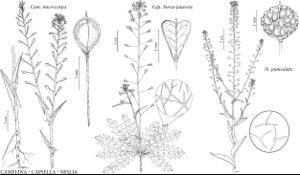Neslia paniculata
J. Bot. Agric. 3: 162. 1815.
Plants sparsely to moderately pubescent, fruits glabrous. Stems (1.4–) 2.5–7.5 (–9) dm. Basal leaves shortly petiolate; blade oblanceolate to oblong, 2–7.5 cm × 5–20 mm. Cauline leaves: blade lanceolate, narrowly oblong, or linear-lanceolate, (1.5–) 2.5–7 (–9) cm × (2–) 3–15 (–25) mm, apex acute or acuminate, surfaces sparsely pubescent, trichomes mostly forked. Fruiting pedicels straight or slightly curved upwards, (4–) 6–10 (–14) mm. Flowers: sepals 1.5–1.7 × 0.5–0.7 (–1) mm; petals 2–2.5 × 0.5–0.7 (–1) mm; filaments 1.5–2 mm; anthers 0.2–0.4 mm. Fruits (1.7–) 2–2.2 × (2–) 2.2–2.5 mm; style slender, 0.5–0.9 mm. Seeds 1.2–1.4 × 1–1.1 mm. 2n = 14.
Phenology: Flowering May–Sep.
Habitat: Fields, grassy mountain slopes, plains, roadsides, cultivated fields
Elevation: 0-1000 m
Distribution

Introduced; Alta., B.C., Man., N.B., Nfld. and Labr. (Nfld.), N.W.T., N.S., Ont., Que., Yukon, Alaska, Conn., Ind., Maine, Mass., Mich., Minn., Mont., N.H., Ohio, Pa., Vt., Europe, Asia, n Africa, also in South America (Argentina), Australia
Discussion
Selected References
None.
Lower Taxa
"elongated" is not a number."thick" is not a number."dm" is not declared as a valid unit of measurement for this property."dm" is not declared as a valid unit of measurement for this property.
